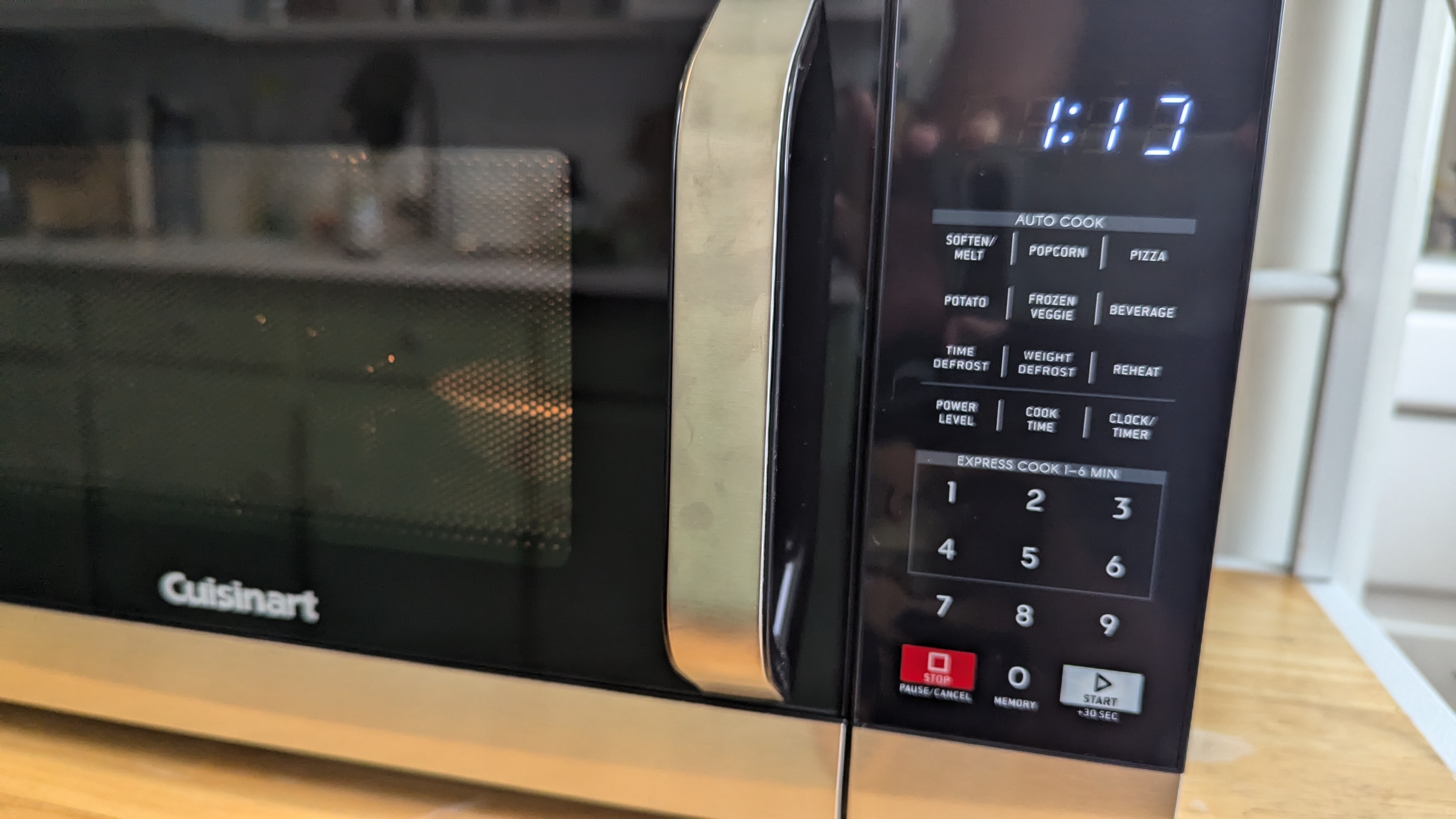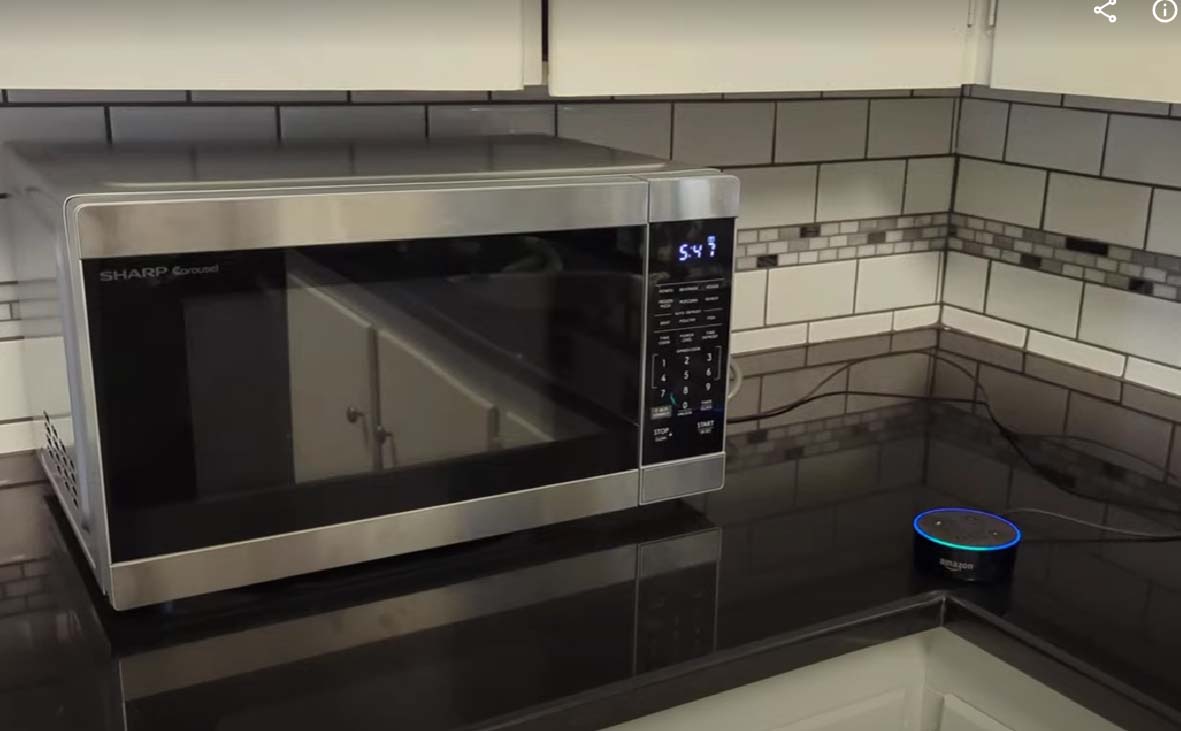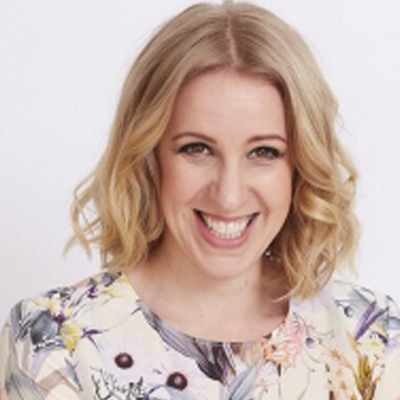So you want to buy one of the best microwaves but don't know which wattage is best? Here's the thing: wattage dictates the cooking power of your microwave. The higher it is, the more powerful the appliance is, allowing it to cook food quicker. A high wattage also gives you more freedom to cook different types of meals. For example, a low microwave wattage is useful for reheating dishes, whereas a higher one can cook frozen foods or meals from scratch.
In this guide, I'll explain what you need to consider when choosing a microwave wattage. To ensure my advice is accurate, I interviewed some kitchen appliance and cooking experts to determine exactly what wattage is best—you’ll find their tips below.
What microwave wattage is best?
Professional chef Scott Groth, creator of the food and recipe blog I’d Rather Be a Chef, told me: "When it comes to wattage, aim for at least 800 watts for decent cooking power. This will get the job done for reheating and basic features. Look to more powerful microwave ovens from 1,000 to 1,200 watts for faster, more even cooking."

Scott Groth is a a professional chef and the creator of the food and recipe blog I’d Rather Be a Chef. He shares innovative cooking techniques and health-conscious recipes, drawing on his extensive experience in both professional and home kitchens.
"Higher-wattage microwaves generally cook food quicker and more thoroughly and often come with more bells and whistles," says Groth.
Dennis G, kitchen appliance expert from Comfort Appliance Repair, told me: "When choosing a microwave, wattage is key. For most households, 1,000 watts is the sweet spot—it cooks food quickly and evenly. Smaller households or those with lighter usage can go with 600-700 watts, though it’ll take longer to heat food."
What wattage is best for what size household?
As a general rule, Groth told me for one to two people: "Between 800-900 watts should suffice for reheating and simple meals. Look for 900-1,200 watts for three to four people to handle larger portions and more diverse cooking."
"The size you need depends on how much you use your microwave," Dennis G. told me. "A model between 1.0 and 1.5 cubic feet is versatile enough for families, while compact ones work for single servings. Higher wattage means faster cooking, so if you’re often in a rush, stick to something around 1,000 watts."
How does the wattage affect the speed the food is cooked?
Groth told me that higher wattage means faster cooking times. For example, a 1200-watt microwave will cook food significantly quicker than an 800-watt model. This is especially handy when juggling multiple dishes or just wanting your meal ready more quickly."

Dennis G is a kitchen appliance specialist with many years experience in the industry. He is owner and lead appliance expert at Comfort Appliance Repair in Tennessee, USA. (https://www.comfortappliancerepairtn.com/).
Does a higher microwave wattage mean a higher price?
Microwaves with higher wattages often come with a high price tag, too. They generally use more electricity per hour than a lower-wattage one, but they cook and reheat foods quicker, which potentially reduces the overall time they are in use.
If you're thinking about getting a higher wattage like a 1,200W microwave, you can expect to pay from $200 for something like this SHARP SMC2266KS 1200 Watt countertop microwave from Amazon ($209.99)or upward of $300 for this Panasonic 1250W 2.2 cu. ft. microwave ($379.99). This compares with just $71.99 for a Farberware 700W countertop microwave from Amazon.
What type of microwave do I need?
If you're wondering how to choose a microwave, the type you need will depend on how it will be used. Groth told me, "A basic countertop model will do fine if you’re just reheating leftovers or making popcorn."
"However, to cook more elaborate meals, consider a convection microwave [like the Breville BMO870BSS1BUC1 Combi Wave Microwave] that combines traditional microwave cooking with convection heat for even better results.
"More advanced features would include a built-in air fryer, steam cooking capabilities, and Bluetooth connectivity… but it’s up to you to determine if you will use this as a cooking or reheating tool."
What size microwave is best?
Groth told me: "Here’s the scoop: If you cook for a family or entertain often, a larger model, around 2.0 cubic feet or more, will give you the flexibility you need. For solo cooks or smaller kitchens, something around 1.5 cubic feet might be more manageable. It depends on your cooking habits and kitchen space.
"Measure your cabinet or countertop before buying your microwave to ensure that it will fit! Some microwaves are built to be placed on the countertop, over a range (meaning they have ventilation capabilities), or in a built-in cabinet. Ensure that you are buying the appropriate microwave for the space."

FAQs
Why is the right microwave wattage important?
Put simply, the wattage will impact the cooking time and power of your microwave, regardless of its size. So compact microwaves or over-the-range microwaves with a higher wattage will deliver more power for cooking your foods quickly.
This also means that you can cook different types of dishes, whereas, with low wattage, you can only reheat dishes.
Is higher wattage better for a microwave?
Yes, the higher the wattage, the more cooking power your appliance has and the more variety of dishes you can make.
What other features should I look for in a microwave?
"Don’t forget about the features!" Groth told me. "Sensor cooking allows the microwave to automatically adjust the cooking time based on the sensors built into the microwave… a neat feature to prevent overcooking or overheating. Preprogrammed settings (presets) are always a favorite, particularly for defrosting, reheating, and popcorn.
"Many microwaves now offer a child lock feature, making them safer for households with small children. I like microwaves with fingerprint resistance and easy-to-clean interiors where everything is simple to wipe down."

